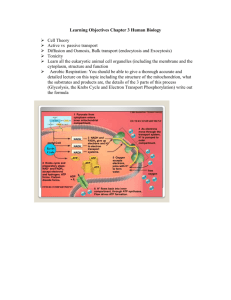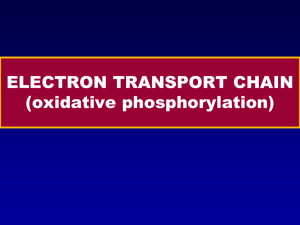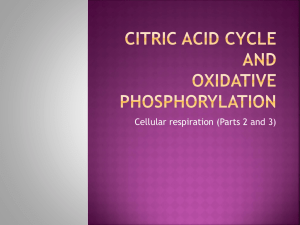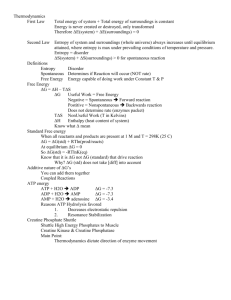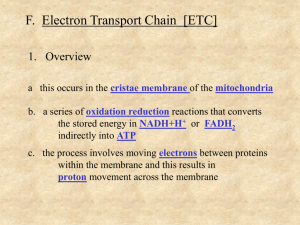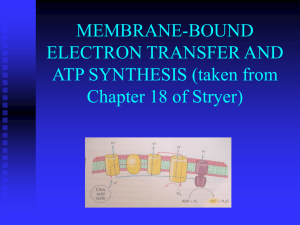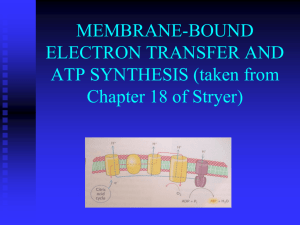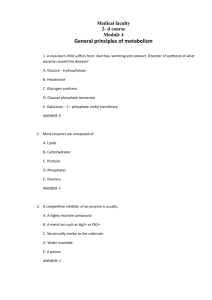USMLE Step 1 Web Prep — The Citric Acid Cycle and Oxidative
advertisement
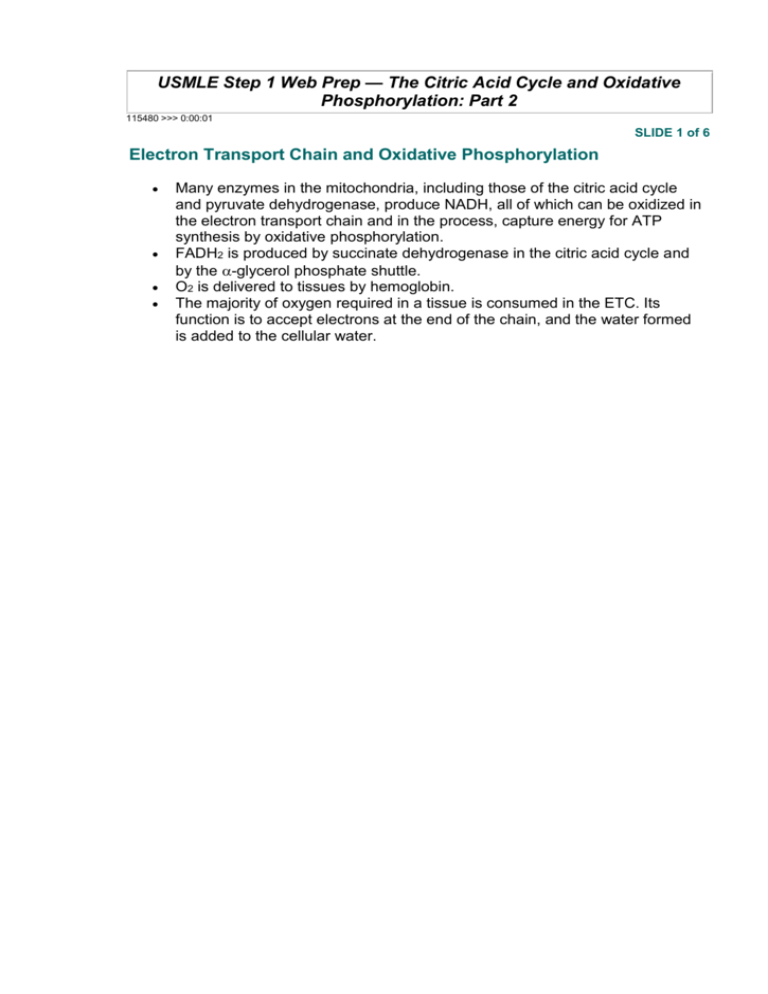
USMLE Step 1 Web Prep — The Citric Acid Cycle and Oxidative Phosphorylation: Part 2 115480 >>> 0:00:01 SLIDE 1 of 6 Electron Transport Chain and Oxidative Phosphorylation Many enzymes in the mitochondria, including those of the citric acid cycle and pyruvate dehydrogenase, produce NADH, all of which can be oxidized in the electron transport chain and in the process, capture energy for ATP synthesis by oxidative phosphorylation. FADH2 is produced by succinate dehydrogenase in the citric acid cycle and by the -glycerol phosphate shuttle. O2 is delivered to tissues by hemoglobin. The majority of oxygen required in a tissue is consumed in the ETC. Its function is to accept electrons at the end of the chain, and the water formed is added to the cellular water. 115485 >>> 0:03:25 SLIDE 2 of 6 Electron Transport Chain NADH is oxidized by NADH dehydrogenase (complex I), delivering its electrons into the chain and returning as NAD+ to enzymes that require it. The electrons are passed along a series of protein and lipid carriers that serve as the wire. These include, in order: 1. NADH dehydrogenase (complex I) accepts electrons from NADH. 2. Coenzyme Q (ubiquinone, a lipid). 3. Cytochrome b/c1 (an Fe/heme protein; complex III). 4. Cytochrome c (an Fe/heme protein). 5. Cytochrome a/a3 (a Cu/heme protein; cytochrome oxidase, complex IV) transfers electrons to oxygen. 6. Succinate dehydrogenase (complex II), fatty acyl CoA dehydrogenase, and the -glycerol phosphate shuttle enzymes reoxidize their FADH2 to FAD and pass electrons directly to CoQ. 115490 >>> 0:11:31 SLIDE 3 of 6 Proton Gradient The electricity generated by the ETC is used to run proton pumps (translocators), which drive protons from the matrix space across the inner membrane into the intermembrane space, creating a small proton (or pH) gradient. The three major complexes I, III, and IV (NADH dehydrogenase, cytochrome b/c1, and cytochrome a/a3) each translocate protons in this way as the electricity passes through them. 115495 >>> 0:13:32 SLIDE 4 of 6 Oxidative Phosphorylation ATP synthesis by oxidative phosphorylation uses the energy of the proton gradient and is carried out by the F0F1 ATP synthetase complex, which spans the inner membrane. As protons flow into the mitochondria through the F0 component, their energy is used by the F1 component (ATP synthetase) to phosphorylate ADP using Pi. On average, when an NADH is oxidized in the ETC, sufficient energy is contributed to the proton gradient for the phosphorylation of 3 ADP to ATP by F0F1 ATP synthetase. FADH2 oxidation provides enough energy for approximately 2 ATP. 115500 >>> 0:17:20 SLIDE 5 of 6 Tissue Hypoxia Hypoxia deprives the ETC of sufficient oxygen, slowing the rate of the ETC and decreasing the rate of ATP production. NADH accumulates, ATP levels fall, glycolysis increases and, in the absence of oxygen, will produce lactate (lactic acidosis). In a myocardial infarction (MI), myocytes swell as the membrane potential collapses and the cell gets leaky. Enzymes are released from the damaged tissue, and lactic acidosis contributes to protein precipitation and coagulation necrosis. Anaerobic glycolysis is not able to meet the demand of most tissues for ATP, especially in highly aerobic tissues like nerves and cardiac muscle. 115505 >>> 0:20:22 SLIDE 6 of 6 Inhibitors Barbiturates inhibit complex I, thus preventing NADH from donating its electrons to the electron transport chain. However, barbiturates still allow FADH2 to donate its electrons. Cyanide and carbon monoxide (CO) inhibit complex IV, thus inhibiting either NADH or FADH2 from contributing its electrons to the ETC. Oligomycin inhibits the F0 component of the ATP synthetase. Uncouplers, which increase the activity of the ETC without producing ATP, include 2,4-dinitrophenol (2,4-DNP) and aspirin (and other salicylates), and act by carrying protons across the mitochondrial membrane and thus dissipating the proton gradient. Brown adipose tissue contains a natural uncoupling protein (UCP, formerly called thermogenin), which allows energy loss as heat to maintain a basal temperature around the kidneys, neck, breastplate, and scapulae in newborns.

